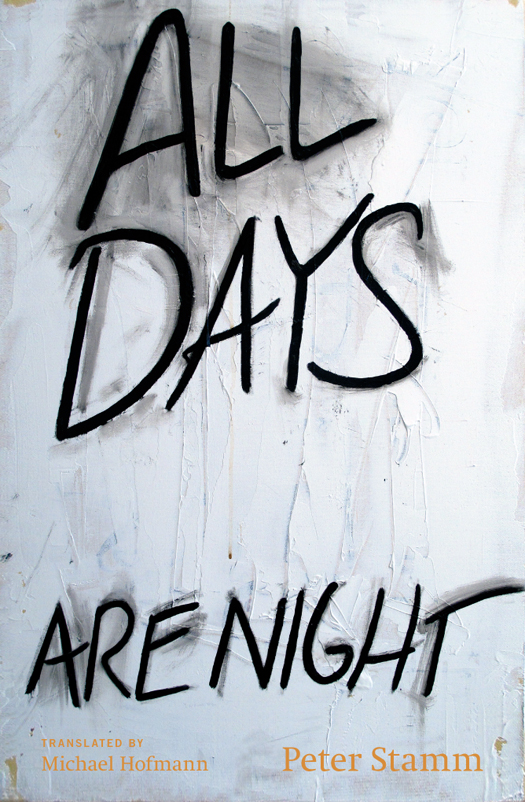
All Days Are Night
A Novel
کتاب های مرتبط
- اطلاعات
- نقد و بررسی
- دیدگاه کاربران
نقد و بررسی

September 8, 2014
Gillian, a prosperous television personality, wakes up in a hospital with her face horribly disfigured, and her husband, Matthias, dead, a casualty of a car crash that followed an argument at the end of a night of revelry. As Gillian slowly recovers physically—her nose is reconstructed from tissue throughout her body—her emotional wounds, the cause of her marital discord, resurface: Matthias discovered provocative photographs of her and assumed she was having an affair. From here, the novel travels back through time, revealing the source of the photographs, which were not snapped by a lover but by an artist, Hubert, whom Gillian once interviewed. Her interest in Hubert’s paintings, specifically his nudes, draws her to him, and Hubert invites her to collaborate on an ill-fated series of sketches and paintings. The collaboration falls apart shortly before the accident. The novel then moves back to Gillian’s recuperation, during which Hubert stays away, and it isn’t until years later that the two reunite and reconcile. This brief volume speaks eloquently about recovery and reinvention. Stamm (Seven Years) alternates his narrative between Gillian and Hubert, sometimes having both recall the same moments; it’s Gillian’s story that truly flourishes.

October 15, 2014
A slim novel filled with big ideas about art and identity.The Swiss author's bloodless minimalism works better in his elliptical short stories (We're Flying, 2012, etc.) than it does in longer work, where even a short novel can feel ponderous with its lack of narrative momentum. The plot points here are few, though to reveal their progression might spoil the reader's discovery. Much of the book takes place inside the head of Gillian, who is initially immobile in a hospital, wondering how she got there. A car accident has left her face unrecognizably disfigured and her husband, the drunken driver, dead. An aspiring actress who instead became a television journalist-which she considers a different sort of acting-Gillian had made a living and found an identity with her face. So who is she now? "It was conceivable that one day there would be a person with a different face, who would be her. But there was as little connecting her to that person as to the other one she had been before the accident." As the novel plays with chronology, much of the first section features pre-accident flashbacks-to the marriage that had become both tense and routine, to her TV show, and in particular to an interview with an artist who made paintings from photos he took of a wide variety of women who posed naked for him. Later, "[h]e saw the possibilities of [Gillian's] face, not so much its beauty as its variety, the many faces that were contained in it." By this point, the novel has shifted its perspective to inside the artist's consciousness. It's six years later, and Gillian has a new face, a new career, a new name. Way too coincidentally, the two have reconnected. Way too portentously, she asks him, "That's a frightening thought, isn't it, that you're capable of killing someone with your art." The novel somehow ends on a note of redemption but without resolution.
COPYRIGHT(2014) Kirkus Reviews, ALL RIGHTS RESERVED.

September 15, 2014
Told from the viewpoint of television presenter Gillian and an artist named Hubert, this latest from award-winning Swiss novelist Stamm (We're Flying) opens with Gillian in the hospital recovering from a car accident that left her face severely disfigured and her husband, Matthias, dead. During her extended rehabilitation, Gillian reflects on her marriage and how her relationship with Hubert, begun after she interviewed him on TV, may have affected the tragedy. Unfortunately, Gillian and Hubert's sections of the book have the same flat, distant, third-person style, and the failure to distinguish their voices limits the reader's engagement with the story. VERDICT The novel is a quick but forgettable read with the exception of the conclusion, which is memorable for all the wrong reasons. In need of an epiphany, Stamm creates an unbelievable set piece that will disappoint readers. Recommended for those interested in art and the art of reinvention; book clubs may wish to debate the ending.--Pamela Mann, St. Mary's Coll. Lib., MD
Copyright 2014 Library Journal, LLC Used with permission.

November 1, 2014
Stamm, a Swiss who writes in German, has been translated into more than 30 languages. In 2013 he was shortlisted for the Man Booker International Prize, and in 2014 he won the Friedrich Hlderlin prize. His fourth novel is slight and deceptively straightforward. Gillian is married to Matthias. After a fight, they attend a party. Driving home, they have an accident. Matthias is killed, Gillian is disfigured. Gillian worked in television. Despite the apparent success of her plastic surgery, she will not recover her looks, and she does not want her glamorous identity back. Or so it seems. In the second section, we meet another couple, Hubert and Astrid, and their young son, Lukas. Hubert and Gillian were acquainted before the accident and get reacquainted. Stamm appears to translate well into English. In translator Hofmann's hands, the writing is almost without style, occasionally awkward. Yet a remarkable amount of life and time falls between the period ending one sentence and the capital letter that begins the next, and this deepens the impression All Days Are Night makes.(Reprinted with permission of Booklist, copyright 2014, American Library Association.)

























دیدگاه کاربران